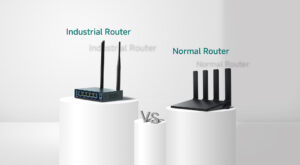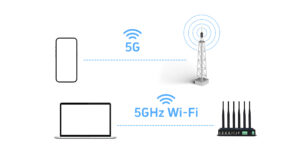A Gigabit Ethernet switch is a crucial networking device that allows multiple devices to communicate at high speeds (up to 1,000 Mbps). Whether you’re setting up a home network, office, or data center, understanding how these switches work, their types, and common issues can help optimize your network performance.
In this guide, we’ll cover:
✔ What is a Gigabit switch?
✔ How does a Gigabit Ethernet switch work?
✔ Managed vs. Unmanaged switches
✔ How to connect a Gigabit switch
✔ FAQs
What Is a Gigabit Ethernet Switch?
A Gigabit switch (also called a Gigabit network switch) is a hardware device that connects multiple computers, servers, or IoT devices in a Local Area Network (LAN) and allows data transfer at 1 Gbps (1,000 Mbps) per port.
Key Features of a Gigabit Switch:
- Speed: 10/100/1000 Mbps auto-negotiation
- Ports: Typically 5 to 48 ports (for home/enterprise use)
- Backward Compatibility: Works with Fast Ethernet (100Mbps) devices
How Does a Gigabit Ethernet Switch Work?
A Gigabit switch operates at Layer 2 (Data Link Layer) of the OSI model and uses packet switching to forward data efficiently.
Working Principle:
- Device Connection: Computers, printers, and servers plug into the switch via Ethernet cables.
- MAC Address Learning: The switch records device MAC addresses to direct traffic efficiently.
- Packet Forwarding: When Device A sends data to Device B, the switch sends it only to Device B (unlike a hub, which broadcasts to all ports).
- Auto-Negotiation: Adjusts speed (10/100/1000 Mbps) based on the connected device.
Types of Gigabit Switches
Unmanaged Gigabit Switches
Unmanaged switches are plug-and-play devices with no configuration options. They automatically handle data traffic at gigabit speeds (1,000 Mbps) without user intervention, making them ideal for simple home networks or small offices where advanced features aren’t required. These switches are cost-effective and easy to set up but lack customization capabilities like VLANs or traffic prioritization.
Managed Gigabit Switches
Managed switches offer advanced control over network traffic, supporting features like VLANs, Quality of Service (QoS), and port mirroring. They are used in enterprise environments where network segmentation, security, and performance optimization are critical. While more expensive and complex to configure, they provide greater flexibility and monitoring tools for IT administrators.
Commercial vs. Industrial Switches
Commercial switches are designed for office environments with standard temperature ranges (0°C to 40°C), while industrial switches operate in harsh conditions (-40°C to 75°C) with ruggedized housings for factories or outdoor use.
How to Connect a Gigabit Switch
A gigabit switch connects upwards to a router or core network device to provide internet access and downwards to end-user devices (computers, printers, cameras) to enable local data exchange. The upward link ensures WAN connectivity, while downward links facilitate high-speed LAN communication.
FAQs About Gigabit Switches
1. Can You Use Fast Ethernet Cables in a Gigabit Switch?
✅ Yes, but speeds will drop to 100Mbps. Always use Cat5e or Cat6 for full Gigabit performance.
2. How Fast Is a Gigabit Switch?
- 1,000 Mbps (1 Gbps) per port
- Non-blocking throughput: A 5-port Gigabit switch can handle 5 Gbps total bandwidth.
3. Why Am I Only Getting 100Mbps on a Gigabit Switch?
If your Gigabit switch is running at 100Mbps, check:
✔ Cable Quality – Use Cat5e or Cat6 (Cat5 supports only 100Mbps).
✔ Device Limitations – Some older PCs/NICs only support Fast Ethernet.
✔ Port Configuration – Ensure auto-negotiation is enabled.
✔ Faulty Cable/Port – Test with different cables/ports.
4. Do Gigabit Switches Reduce Latency?
✅ Yes, compared to hubs or Fast Ethernet switches, Gigabit switches reduce latency due to dedicated bandwidth per port.
Conclusion
A Gigabit Ethernet switch is essential for high-speed networking, offering 1,000 Mbps speeds, efficient traffic management, and scalability. Whether you need a simple unmanaged switch for home use or an advanced managed switch for business networks, choosing the right type ensures optimal performance.


